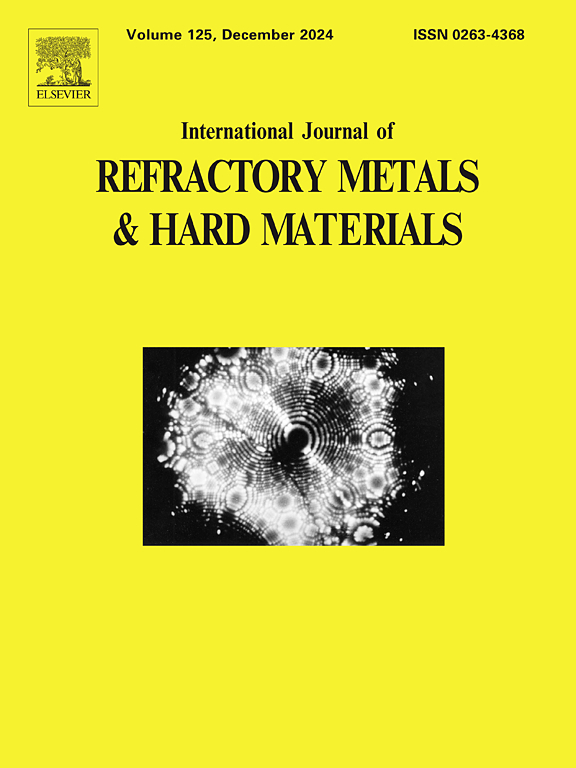Bauschinger effect in wear of in situ formed TiCx/high Cr white iron composite against Si3N4 counter-ball
IF 4.2
2区 材料科学
Q2 MATERIALS SCIENCE, MULTIDISCIPLINARY
International Journal of Refractory Metals & Hard Materials
Pub Date : 2025-05-14
DOI:10.1016/j.ijrmhm.2025.107234
引用次数: 0
Abstract
The unidirectional and bidirectional sliding tests for using Si3N4 ceramic as the grinding ball sliding with the circular motion against in situ formed TiCx/high Cr white iron composite (TiCx/HCWI) were performed to study the wear behaviors. The cyclic numbers CN = 0, 1, 2, 5, 10 were adopted to observe the friction coefficient, wear volume loss, roughness (Sa) and the height difference between the peak and valley (Spv) for the worn surface. The wear mechanism was analyzed by combining the micromorphology of unidirectional and bidirectional wear with the microstress analysis by simulation. Bauschinger effect appears obviously due to greater residual stress in bidirectional wear (CN = 10). This work provides a reference for the application of TiCx/HCWI about how to reduce the wear rate and giving full play to the advantage of wear resistance, and has important research value for optimizing processing.
原位成形TiCx/高Cr白口铁复合材料对Si3N4反球磨损的包辛格效应
采用Si3N4陶瓷作为磨球,对原位成形的TiCx/高Cr白口铁复合材料(TiCx/HCWI)进行了单向和双向滑动试验,研究了其磨损行为。采用循环数CN = 0、1、2、5、10来观察磨损表面的摩擦系数、磨损体积损失、粗糙度(Sa)和峰谷高度差(Spv)。将单向和双向磨损的微观形貌与模拟微应力分析相结合,分析了磨损机理。双向磨损(CN = 10)残余应力较大,鲍辛格效应明显。该工作为TiCx/HCWI的应用提供了降低磨损率、充分发挥其耐磨性优势的参考,对优化加工具有重要的研究价值。
本文章由计算机程序翻译,如有差异,请以英文原文为准。
求助全文
约1分钟内获得全文
求助全文
来源期刊
CiteScore
7.00
自引率
13.90%
发文量
236
审稿时长
35 days
期刊介绍:
The International Journal of Refractory Metals and Hard Materials (IJRMHM) publishes original research articles concerned with all aspects of refractory metals and hard materials. Refractory metals are defined as metals with melting points higher than 1800 °C. These are tungsten, molybdenum, chromium, tantalum, niobium, hafnium, and rhenium, as well as many compounds and alloys based thereupon. Hard materials that are included in the scope of this journal are defined as materials with hardness values higher than 1000 kg/mm2, primarily intended for applications as manufacturing tools or wear resistant components in mechanical systems. Thus they encompass carbides, nitrides and borides of metals, and related compounds. A special focus of this journal is put on the family of hardmetals, which is also known as cemented tungsten carbide, and cermets which are based on titanium carbide and carbonitrides with or without a metal binder. Ceramics and superhard materials including diamond and cubic boron nitride may also be accepted provided the subject material is presented as hard materials as defined above.

 求助内容:
求助内容: 应助结果提醒方式:
应助结果提醒方式:


